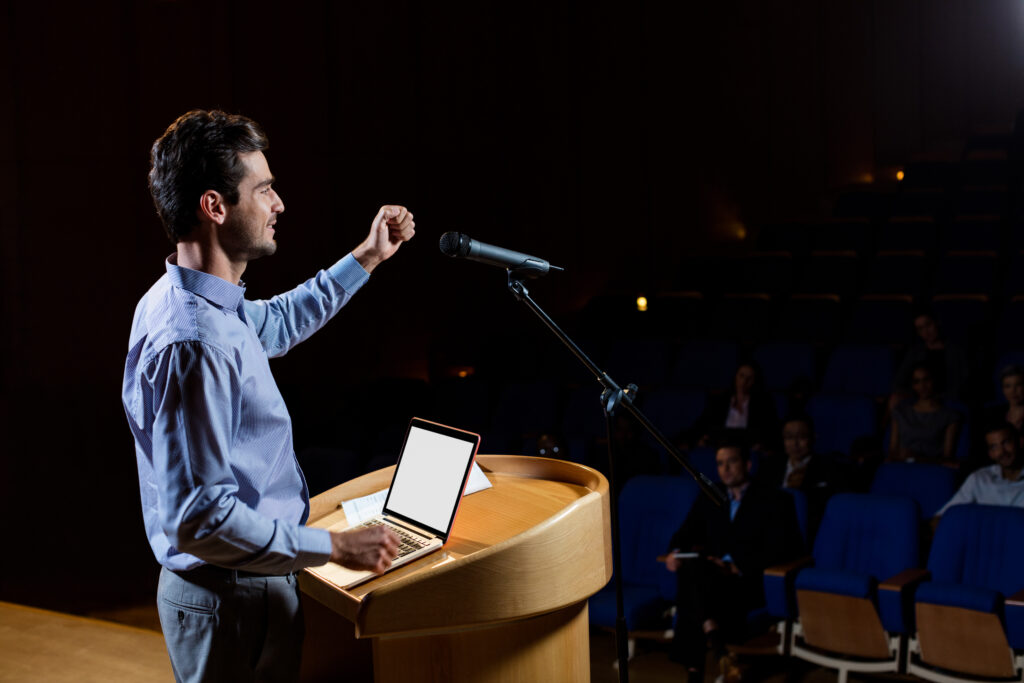Public speaking is as much an art as it is a discipline. It is not simply about standing before an audience and delivering a message. It is about clarity, structure, presence and having very good PowerPoint slides to aid your presentation. One of the most effective ways to bring these elements together is to know your script cold.
To know a script cold means more than just memorising lines. It involves taking the time to carefully craft the words and structure of what you plan to say. It means rehearsing until the flow becomes second nature. This level of preparation transforms a talk from a rigid delivery into a natural performance.
Unlike basic memorisation or trying to improvise your way through, knowing your script cold involves planning so that words flow and transitions between salient points, so your entire presentation becomes one seamless motion. Once you have this, you are also more prepared to adapt or improvise during the delivery itself.
Crafting Your Script
The first step in the process is to decide how you will approach your script. Some speakers prefer to write out every line in detail. Others prefer to note key talking points and work around those. Your choice depends on your style and the context of your presentation.
Once you have the content, break it into clear, natural sections. These sections should represent logical stages in your argument or message. Learn each section on its own. Practice the transitions between them. A well-practised transition ensures that your talk does not sound like a list of unrelated points but rather a coherent and connected presentation.
Learning and Rehearsing
Learning your script cold does not happen overnight. Set aside time each day to review and rehearse. Repetition is key. Say it aloud. Record yourself. Watch your delivery. Adjust your tone and body language as needed. Practice in different environments and positions. Walk as you speak or stand still. Vary the conditions to ensure you are not dependent on any one set of cues.
Rehearsing is not just about getting the words right. It is about rhythm, confidence and flow. The more you rehearse the more natural your delivery will feel.
Preparing for the Unexpected
Even with the most thorough preparation, there is always a chance you might forget something. This is not a failure. What matters is how you manage it. Have a plan for those moments. It could be as simple as pausing and referring to your notes. A calm acknowledgement that you need a moment to find your place shows composure rather than weakness. Audiences appreciate honesty and resilience more than perfection.
The Power of High-Quality PowerPoint Presentation Slides
In many talks, visual support is crucial. PowerPoint presentation slides should reinforce your message – not simply repeat it word for word. Well-designed slides can elevate your delivery and help the audience follow your key points.
If visual design is not your strong suit or you are short on time, consider working with a professional transcription and presentation design service. These experts can take your script and create visually appealing, consistent slides that align perfectly with your message. This not only saves time but ensures your visuals contribute meaningfully to your overall presentation.
Extending the Value of Your Presentation
Once your talk is complete, recording and transcribing it can open up further opportunities. A professionally prepared transcript can be repurposed for blog posts, training resources, or internal documentation. It also supports accessibility, enabling individuals who prefer reading to engage with your content.
Sharing excerpts of your talk on social media or your website helps you reach a wider audience and makes the most of the time you invested in preparation. It is an effective way to get continued value from a single presentation.
In Conclusion
Public speaking becomes far less daunting when you know your script thoroughly. This preparation creates confidence, clarity, and a real connection with your audience. By taking the time to structure your message, rehearse it properly, anticipate setbacks, and use professional tools like PowerPoint presentation slides, you are not just giving a talk – you are delivering an experience that people will remember
About OutSec
OutSec is the UK’s leading online transcription company whose business has grown substantially since its inception in 2002. We are now one of the most successful transcription companies in the United Kingdom.
OutSec provides secure outsourced transcription services to the medical, legal, property and surveying, universities, media and interviews, advisory boards, conferences & seminars, inventories, financial, corporate, HR, recruitment and Executive Search sectors.
Accounts are free, you pay on a per-minute basis (rounded to the nearest minute) on a pay-as-you-go basis, with no contracts or minimum spend. So why not open an account today?
We also provide a boutique Virtual Personal Assistant Service, Crystal Clara, for those who require a more personal and tailored service.
Why is Dictation More Efficient than Typing?
Well, interestingly it is because we can all speak faster than we can type:
“The average person types between 38 and 40 words per minute”.
A “good rate of speech ranges between 140 -160 words per minute.”
In other words, dictation is up to four times faster than typing. Therefore, simply dictating a document is more cost-efficient, giving you more time to dedicate your efforts elsewhere in your business.
Picture attribution: Image by Freepik.

